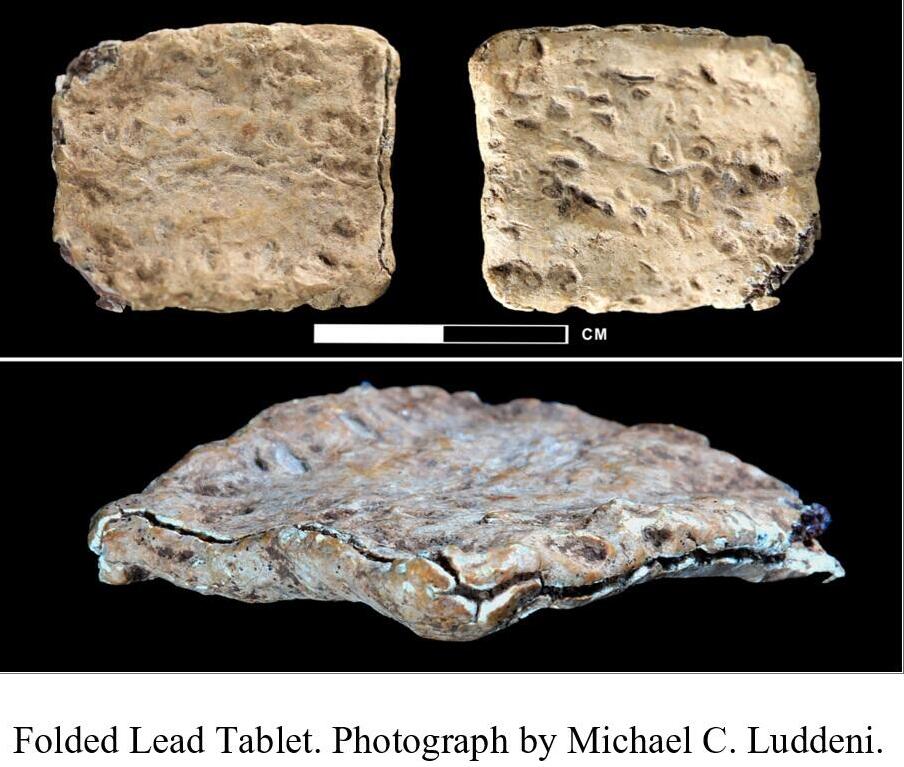The folded lead plate on Mount Ebal is an archaeological find of a small lead plate, and it is claimed that it is from the Late Bronze Age, and that it bears the earliest Hebrew inscription ever discovered


In 1982, archaeologist Adam Zertal discovered what he believed to be an ancient Israelite altar on Mount Ebal in the West Bank, dating to the early Iron Age. This claim was based on the structure’s similarity to the biblical description of an altar and the presence of animal bones and pottery shards.
The discovery of a small lead plate at this site has been a particular source of intrigue. The plate contains an ancient script, which some have suggested may be a form of early Hebrew or a related West Semitic script. However, the plate’s inscription is difficult to decipher, and its meaning is unclear.
According to Gershon Galul The tablet is inscribed with the words “Cursed, cursed, cursed – cursed by the God YHW…..”
Critics have pointed out that the connection between the Mount Ebal site and the biblical altar is speculative, and that the interpretation of the lead plate is uncertain. The site’s dating has also been questioned, as has the assertion that it was constructed by Israelites.
The significance of the lead plate and the Mount Ebal site as a whole is a matter of ongoing discussion among archaeologists and biblical scholars. Some believe that the site provides evidence for the historicity of certain biblical narratives, while others are more skeptical.
Given the complex and often contentious nature of biblical archaeology, it’s likely that the debate over the lead plate and the Mount Ebal site will continue.

